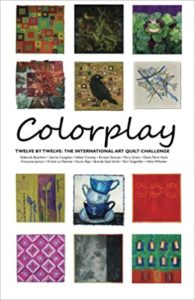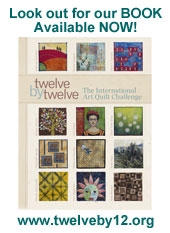As a dual citizen of New Zealand and Australia, with strong familial ties to the United States, I am interested in notions of national identity in the era of globalisation and and this was my starting point. With Anzac Day falling mid-way during the challenge period, it was natural that I was drawn to this as a possible subject. Anzac Day marks the first first major military action fought by Australian and New Zealand forces during the First World War and the Gallipoli campaign is often cited as where each country forged a national consciousness distinct from "mother England". I was mulling over how I to convey such notions in a quilt* when I came across another compelling World War I news story with identity at its core - Lost and Found at Fromelles.
In early May 2009, a team of archaeologists and forensic anthropologists commenced the exhumation of up to 400 World War I soldiers buried in a mass grave beside Pheasant Wood near the French village of Fromelles. The pits are believed to contain the remains of British and Australian soldiers buried behind German lines after the Battle of Fromelles in July 1916. The ambitious project to identify the men, and re-inter them in a new military cemetery, is being overseen by the Commonwealth War Graves Commission which is seeking the registration of affected families to provideDNA samples to establish a genetic profile and data for the men.The Battle of Fromelles has been described as the worst 24 hours in Australian military history with 5533 casualties recorded including 1780 dead. The Commission estimates that more than 165,000 Commonwealth soldiers killed on the Western Front remain missing. Fast forward to the 21st century and Australian soldiers continue to serve in conflicts beyond our shores. These days, the bodies of dead soldiers are typically repatriated although, in a distressing case of mistaken identity and Jacob Kovco, this process can take two tries. But that is another story.
In terms of techniques, Lost & Found was created with painted fusible webbing, free-motion quilting and embellishments. The striking image of a white gloved hand holding the fragment of a soldier's uniform from Fromelles, prompted some rummaging around in my button jar for suitable embellishment items. Then I found some rusty bottlecaps on my morning walk that seem even more appropriate.
* I was aware of the painting by Euan McLeod that won the 2009 Gallipoli Art Prize. Then, as I prepared this blog post, for the first time I visited the Gallipoli Art Prize website which features some other very interesting artworks. I think you would agree that the very last painting, Lest we Forget by Vilma Bader, would sit easily alongside many contemporary textile works.




8 comments:
This is a real departure from your norm Brenda, and I really like it. The bottlecaps add such a feeling of decay and sadness to the piece.
This surprises me, Brenda, as it does seem different from your prior pieces. But I like it a lot and was fascinated by the story behind it. I'd never heard of Anzac Day.
You've presented a very striking image -- the crosses are very strong. This piece evokes a very strong feeling, even before you know the story.
Totally would not have guessed this to be from you Brenda! Each reveal I find myself learning something new and your quilt along with the information you've given has certainly provided me with new knowledge. I had no idea of the recent events about this mass grave.
Fascinating! Yes, very "un-Brenda" but thought-provoking and strong. The bottle caps really stopped me--stand-ins for humans with real identities and unique lives, discarded, in war, like so much refuse.
Yes, very un-Brenda. But that's what we're about here, right? Trying something different, pushing our own comfort zones.
As an American, I get a "tomb of the unknown" or brotherhood of soldiers vibe from this in that it's not about individuals, but about soldiers as a whole. What's especially interesting to me is that I saw an American military cemetery, and yet it really could be in any predominantly Christian country. (Just goes to show how our cultural biases color everything we perceive).
This is an intriguing departure from our other explorations of personal identity.
Your intriguing reflection of different shades of identity reveals so much about your multi-faceted identity Brenda. Years ago I visited the mass graves in France and your description brings back those memories strongly. Your quilt, being a step away from your usual, is striking indeed.
Yeah! Brenda, you win the prize for the surprise. I always think I can guess who has done each piece as it comes up on the screen. This is a very thoughtful piece. Thank you for sharing this story. I always feel badly for those whose loved ones are lost in battle and doubly so when their bodies are not returned — a real loss of identity.
WHO made this?? Brenda???!
I wondered what on earth you were up to with those bottle caps! Great stuff. Those rows of white crosses always get to me - love the careful, neat stitching around those. I'm fascinated by how much the green ground looks like crayon.
Post a Comment